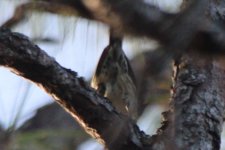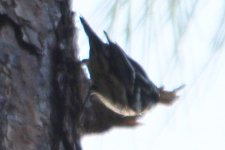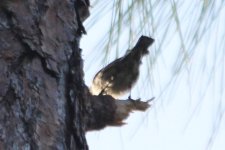Fandango739
GeoBird

Seen today at Six Mile Slough in upper level of pines. It behaved much like a Black and White, hanging upside down on limbs. It had a double bar on the wings and a great deal more color than even the young Black and Whites I've seen.
Suggestions?
Suggestions?






